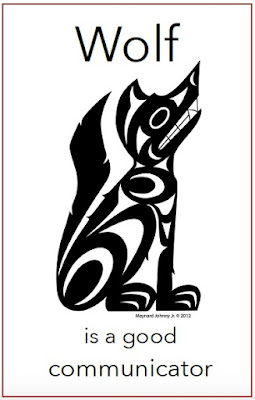The 6 Core Competencies are at the heart of the redesigned BC curriculum.
They are designed to underpin and arch over all learning K - 12.
The Six Cedar Trees is a book built on the Core Competencies.
The Six Cedar Trees is a book built on the Core Competencies.
The Six Cedar Trees
by: Margot Landahl and Celestine Aleck
publisher: Strong Nations Publishing, 2017
summary: Eagle perches himself in a grove of cedar trees high above a school playground. He explores the characteristics of 6 different Pacific Northwest animals and connects them with strengths we grow in ourselves (the core competencies).
The Six Cedar Trees is a wonderful way to introduce and reinforce the core competencies. It provides a vehicle to bring the core competencies into the life of the classroom - to "Notice It, Name It, Nurture It".
The Six Cedar Trees has a wonderful, full of good ideas website for teaching that supports the core competencies.
We started slowly.
On our first day with The Six Cedar Trees, we went to our school forest and read about the eagle flying high in the sky, coming to rest in a grove of cedar trees, and looking down on a school playground.
We were inspired to get to know some of our local cedar trees.
We introduced ourselves to cedars by feeling (and creating with) bark texture.
The Six Cedar Trees has a wonderful, full of good ideas website for teaching that supports the core competencies.
We started slowly.
On our first day with The Six Cedar Trees, we went to our school forest and read about the eagle flying high in the sky, coming to rest in a grove of cedar trees, and looking down on a school playground.
We were inspired to get to know some of our local cedar trees.
We introduced ourselves to cedars by feeling (and creating with) bark texture.
We lay on the ground at the base of a cedar tree and looked waaaaay up.
We wrapped our arms around an old growth beauty to give it a hug (and see which was bigger, us or the tree - we were identical).
As we continue to learn about cedar trees, we continued reading the next section of The Six Cedar Trees. We read about Wolf; Wolf is a great communicator.
Over a week, we incorporated Wolf's communicator traits into our classroom language. We were intentional in sharing our ideas, listening respectfully, and taking care of the pack - all like Wolf.
Just before we we did our Communication Core Competency self assessment (last thing on a Friday afternoon - I knew I was flirting with insanity), I put up a Wolf poster
and asked the kids to remind me how Wolf was a good communicator. And they told me. They got it! On a Friday afternoon! Cue the happy dance.
Back to the self assessment... We are all working towards being great communicator like Wolf. Some of us are a little bit good, some of us are pretty good and some of us are very good. Where ever we are, we can all keep practicing and getting better at sharing ideas and listening respectfully.
The kids coloured the wolf that corresponded with their self assessment.
When I looked through them after school, I saw that some of the kids who find it difficult to share their thoughts and ideas, self assessed as "pretty good" rather than "very good". Some children acknowledged that their listening skills could use some practice. Pretty impressive for 5 year olds.
Click below to download self assessments for all 6 core competencies - and a cover page and explanation page for parents/families.
A French Immersion teacher in my district translated the self assessments into French for her class. Download a French Core Competencies Self-Assessment. Thanks Vicki.
Visuals are so important to early learners.
Click to download a set of posters to go with each animal and core competency.
Print them on 11 x 17" paper. I backed mine with red construction paper to make them really pop.
If like me, you have kids who like to colour (it is very calming), here are some colouring sheets.
Click to download a set of posters to go with each animal and core competency.
If like me, you have kids who like to colour (it is very calming), here are some colouring sheets.
All of the Coast Salish animal images are from the School District 79 (Cowichan) website. While the images belong to the artists that created them, (Stuart Pagaduan and Maynard Johnny) they are available for educational use.
helpful resources
The Six Cedar Trees is available from Strong Nations. They also carry a large poster with all the animals, and a set of 6 smaller posters, each with one animal.
Animals of the Salish Sea offers Coast Salish teaching about local animals beside some kid-friendly animal facts - with amazing art work. There is also a set of flash cards.
Sometimes I Feel Like a Fox -- In this introduction to the Anishinaabe tradition of totem animals, young children explain why they identify with different creatures such as a deer, beaver or moose. Delightful illustrations show the children wearing masks representing their chosen animal, while the few lines of text on each page work as a series of simple poems throughout the book. (from GoodReads)






























Fabulous post and resources, Sandi!
ReplyDeleteYour visit with the cedar trees reminds me of a tree unit I did about 10 years ago. Almost every day we'd walk into the forest by our school. We'd take our blankets and lie down on the trail and use all our senses (expect tasting :) to experience the forest. It was magical!
I bet your kids are really enjoying these lessons, too!